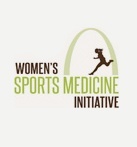Focal Cartilage Defects
A focal cartilage defect is a well-defined localized area on the cartilage that is inflamed, damaged or injured. The defect may be either full thickness or partial thickness.
The defect is usually caused as a result of a significant injury, especially while participating in sports activities that require sudden twisting motions such as basketball and soccer. It is frequently seen in the elbow, ankle, hip and knee joints.
Symptoms include pain which is not significantly improved with the use of anti-inflammatory medications, swelling of the joint, temporary locking of the joint and loss of function.
When you exhibit the above symptoms, your doctor will review your history and perform a thorough physical examination of the affected joint for sensitivity, range of motion, stability and strength. Imaging studies such as X-rays, to check for any bony abnormality, and magnetic resonance imaging (MRI), to evaluate the soft tissues, may be ordered.
Nonsurgical options such as rest, elevating the affected limb, using ice and compression on the site of injury, anti-inflammatory medication and dietary supplements are usually the first line of treatment. If symptoms persist, your doctor will suggest surgery. An arthroscope (narrow lighted tube with a camera attached) is usually used to assess the extent of damage to the cartilage. Some of the surgical treatment options include:
- Microfracture: Tiny holes are made in the bone below the cartilage defect to increase blood flow to the area, making conditions favorable for tissue regeneration.
- Mosaicplasty: Bony cartilaginous plugs are removed from a less weight-bearing area and transplanted onto the focal cartilage defect.
- Autologous chondrocyte implantation (ACI): Healthy cartilage tissue is taken from a less weight-bearing area and grown in a laboratory for about three to five weeks. The newly grown cartilage cells are then surgically implanted into the focal cartilage defect.
- Osteochondral autograft transplantation: Cylindrical plug(s) of cartilage and underlying bone are taken from a non-weight bearing region of the same joint and transferred to the defect.
- Osteochondral allograft transplantation: In case the defect is very large, cartilage is transplanted from a deceased donor.
Once pain and swelling have resolved physical therapy rehabilitation is recommended to allow gradual return to activities of daily living.




